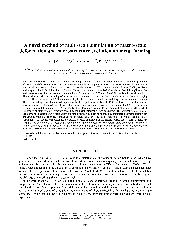摘要
In recent years, multi-scale simulation technique of metal forming is gaining significant attention for prediction of the whole deformation process and microstructure evolution of product. The advances of numerical simulation at macro-scale level on metal forming are remarkable and the commercial FEM software, such as Deform2D/3D, has found a wide application in the fields of metal forming. However, the simulation method of multi-scale has little application due to the non-linearity of microstructure evolution during forming and the difficulty of modeling at the micro-scale level. This work deals with the modeling of microstructure evolution and a new method of multi-scale simulation in forging process. The aviation material 7050 aluminum alloy has been used as example for modeling of microstructure evolution. The corresponding thermal simulated experiment has been performed on Gleeble 1500 machine. The tested specimens have been analyzed for modeling of dislocation density, nucleation and growth of recrystallization(DRX). The source program using cellular automaton (CA) method has been developed to simulate the grain nucleation and growth, in which the change of grain topology structure caused by the metal deformation was considered. The physical fields at macro-scale level such as temperature field, stress and strain fields, which can be obtained by commercial software Deform 3D, are coupled with the deformed storage energy at micro-scale level by dislocation model to realize the multi-scale simulation. This method was explained by forging process simulation of the aircraft wheel hub forging. Coupled the results of Deform 3D with CA results, the forging deformation progress and the microstructure evolution at any point of forging could be simulated. For verifying the efficiency of simulation, experiments of aircraft wheel hub forging have been done in the laboratory and the comparison of simulation and experiment result has been discussed in details.
- 出版日期2011
- 单位中南大学
